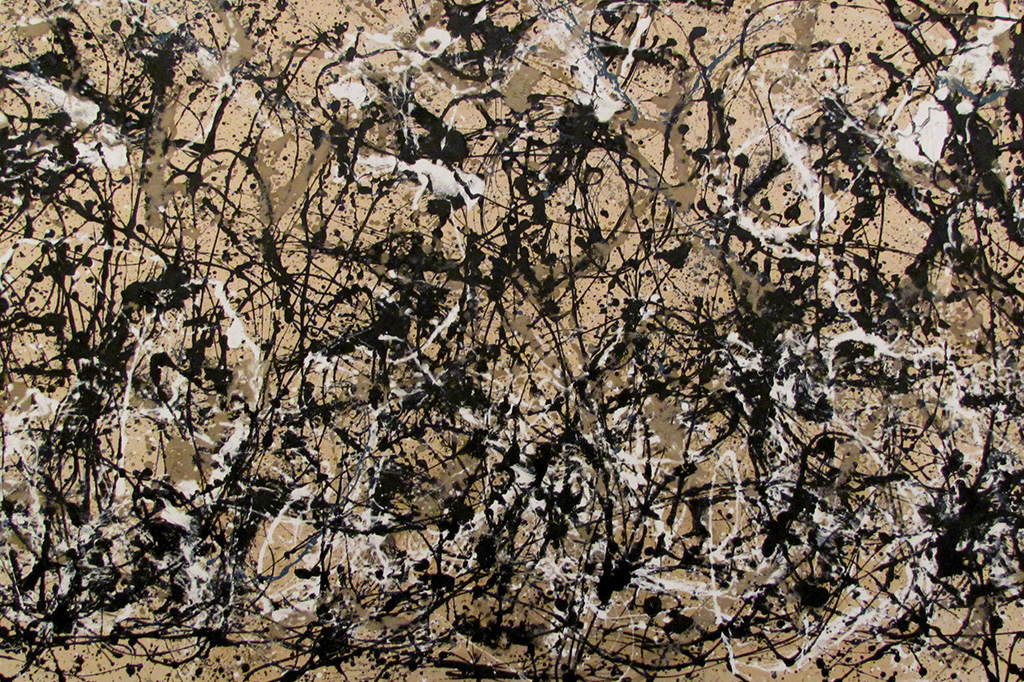Le Déjeuner sur l’Herbe d’Edouard Manet (en)
The Luncheon on the Grass (Le Déjeuner sur l’herbe) – originally entitled The Bath (Le Bain) and later Partie Carrée – is a large (208 cm x 264.5 cm) oil on canvas painting realised by the french painter and forerunner of modern painting Edouard Manet in 1862 and 1863. It is exhibited in the Musée d’Orsay, in Paris. The Luncheon on the Grass brings together several subjects and motifs: the nude, the classical figures, the portrait, the still life, the landscape, the allegory and the modern life. Edouard Manet drew his inspiration from The Pastoral Concert, attributed initially to Giorgione but now considered a work from Titian, and The Judgement of Paris, an engraving by Raphael. Rejected by the official Paris Salon of 1863, Edouard Manet shows his painting the same year at the Salon of the Refused (Le Salon des Refusés). Because of what was being portrayed and how it was portrayed, the painting – focus of all attentions – became a source of scandal, mockeries and controversy.
The Luncheon on the Grass represents four figures at lunchtime in the woods. The staging is rather theatrical than realistic. One man is focusing on his own talk, and another man is gazing into the distance. The woman in the forefront stares at the viewer in silence. She is entirely naked, neither embarrassed nor prudish, and bathed in bright light. The dark shades of the men’s clothes and nature reinforce the brightness of her skin and general appearance in the centre of the canvas. The woman in the background is of exaggerated size and, in doing so, looks considerably unreal. In the foreground, a fruit basket is spilt on clothes, a blue dress and a straw hat carelessly left on the side. A piece of bread lies near fruits which belong to different seasons; we rarely see cherries and figs together, which makes the scene even more surreal. This still life, in contradiction to the rest of the painting, gives a feeling of bustle and disorder.
The painting has an important format (208 x 264.5 cm). This canvas size was generally used for historical, mythological or religious thematics. Edouard Manet painted with glaze, thin and transparent layers of paint which provide the painting with luminosity and intensity and, eventually, a high degree of finish. This technique enables the figures to stand out very distinctly on the canvas. The three central figures, of real size, constitute a classical triangle composition. Going further, we can even observe that the triangle could extend to the bird. In the vast amount of green, the little red bird, strategically located, can act as a cornerstone as in Gothic arches. The neglected pile of clothes and the two feminine bodies, curved, round and bent, are in opposition to the previously described straight, oblique and vertical lines. They reduce the sensation of stiffness. The nude character is not modelled but very flat, without any use of shadows to depict volume as the ancient masters used to do. This way to paint her eventually gives the impression of a cut-out figure under studio light. This entire set of processes involving lines, shapes, colours, textures and space give the sensation of a surreal scene taking place in a fictional decor.
The Luncheon on the Grass, disregarding the academic and societal conventions of that time, caused a significant scandal for moral and aesthetic reasons. Edouard Manet appeared, from all perspectives, as an iconoclast. Nudes were, at this period, only representing allegories, mythological characters or nymphs with ideal shapes. Edouard Manet portrays an ordinary nude woman anyone could cross in the streets, which could even be called « naked » instead of nude. Far away from the pure Venus naturally born nude from the sea, her real contemporary clothing discarded on the wayside shows that she intentionally decided not to be dressed.
A series of details integrated to the painting refers to prostitution: the overturned basket as a symbol of lust, the scattered clothing, the hand of the man appearing behind Victorine, the red bird opening his wings towards the nude body, the frog as « grenouille » used to be a nickname for prostitutes at that time, the shells of oysters reputed to be aphrodisiacs. All these elements tell us, regardless of the misleading appearance of calm, that the act has just been consumed. The four characters represented are well-known Parisian figures and no idealised and timeless figures. This lack of distance between the viewer and the represented figures creates a significant discomfort at this time. The apparent disconnection and lack of interaction between the four figures emphasise this embarrassment. Besides the moral reasons, the painting also chocked for aesthetic reasons. Some sections of the painting are not detailed, as if painted in haste. Instead of subtle gradations, Edouard Manet uses accentuated light and colour contrast with visible brushstrokes. The diversity of renderings, styles and proportions – which do not follow any logic – give the sensation of a collage or fictional decor. With this assumed and perfectly mastered non-compliance to the academic rules of painting Edouard Manet deconstructs the ideals of the society, its entrenched archaic beliefs, and pushes every viewer out of their comfort zone by showing them the unfiltered full-size reality. Under a seemingly romantic and calm spectacle, the reality is quite different. Furthermore, by not directly depicting what is happening, he even lets the imagination of the viewer create the story, which emphasises the suggested narrative.
Edouard Manet said that art must be the accurate transcript of life and that he was the only one capable of taking decisions for his art, nobody else. These thundering statements, as well as his painting, had a tremendous impact on the development of modernism, modern art and the evolution of mentalities starting from the late 19th century.



